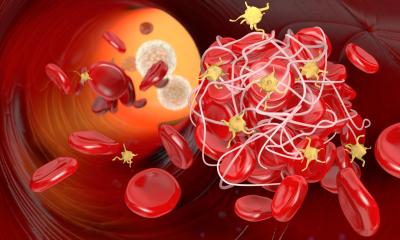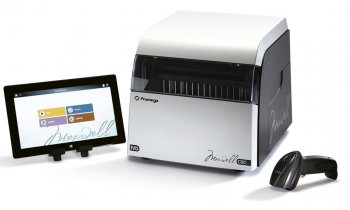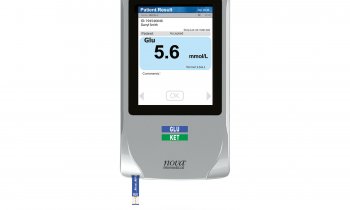
© luchschenF – stock.adobe.com
News • Promising protein analysis tool
New blood test to enable rapid diagnosis of rare genetic diseases
A new, rapid testing method will greatly help the diagnosis of rare diseases in babies and children, according to research to be presented to the annual conference of the European Society of Human Genetics.
While rare genetic diseases are uncommon, as their name suggests, there are more than 7,000 types of disease caused by mutations in more than 5,000 known genes, affecting approximately 300 million individuals worldwide. Currently about half of all patients with a suspected rare disease remain undiagnosed and existing testing methods for undiagnosed conditions are typically slow, targeted to a specific disease, and not always sensitive. This can mean years, or even decades, of inconclusive investigations and invasive tests, causing distress and uncertainty for affected families.
Our new test can identify more than 8,000 proteins in peripheral blood mononuclear cells (PBMCs) covering more than 50% of known Mendelian and mitochondrial disease genes, as well as enable us to discover new disease genes
Daniella Hock
Dr Daniella Hock, a Senior Postdoctoral Researcher at the University of Melbourne, Australia, will present to the conference how she and her team have been able to develop a blood-based method of analysing thousands of proteins in a single, untargeted test. The DNA sequence of most genes is the code to produce proteins, the molecular machines of our cells and tissues. The test is unique as it sequences proteins rather than the genes themselves, and the data can help understand how changes in the gene sequence affect its corresponding protein’s function and lead to disease. The test is applicable to potentially thousands of different diseases, and it can even be used to detect new ones by providing the evidence needed to confirm that a genetic change is the likely cause of the disease. As well as being fast, the proteomic1 test is minimally invasive, requiring only 1ml of blood from infants and with results available in under three days for patients in acute care. “When the test is also performed on blood samples from parents we call it trio analysis. In recessively inherited conditions, this helps considerably in differentiating between carriers, who only have one copy of the defective gene, and the affected individual who carries two copies,” she says.
For the patient, such a molecular diagnosis means rapid access to appropriate treatment, if available, a prognosis, and an end to numerous, sometimes invasive tests. For families, a diagnosis can mean access to reproductive options to prevent the occurrence of disease in future pregnancies via prenatal or preimplantation genetic testing. And for healthcare systems, replacing a battery of targeted tests by a single analysis should lead to reduced healthcare costs, not just by reducing the testing required for a diagnosis, but also by being able to offer appropriate care at an early stage.
“A recent study2 carried out in collaboration with the Melbourne School of Population and Global Health revealed that implementing our test in a clinical setting would have a similar cost to that of the current test used to diagnose rare mitochondrial disease, with the advantage that our test can potentially diagnose thousands of other diseases,” says Dr Hock. “Our new test can identify more than 8,000 proteins in peripheral blood mononuclear cells (PBMCs) covering more than 50% of known Mendelian and mitochondrial disease genes, as well as enable us to discover new disease genes.”
The researchers hope that their test will become part of standard diagnostic procedure for rare and other genetic diseases in clinical labs. “The ability to use so little blood from infants and to produce robust results with a rapid turnaround time has been revolutionary to families. Moreover, the use of familial samples for trio analysis greatly improves the differentiation between carrier and affected individuals with higher confidence, and that has exceeded our initial expectations. We believe that the use of this test in clinical practice will bring considerable benefits to patients, their families and to healthcare systems by reducing the diagnostic time” Dr Hock concludes.
Chair of the conference Professor Alexandre Reymond said: “Non-invasive agnostic approaches such as genome sequencing and protein analysis will allow us to reach a diagnosis more rapidly in the future. They will also permit the solving of previously unsolvable cases, thus helping families worldwide.”
References:
- A proteomic test studies the structure and function of proteins, including their expression, abundance and how they interact with each other inside cells.
- Santos Gonzalez F, Hock DH, Thorburn DR et al.: A micro-costing study of mass-spectrometry based quantitative proteomics testing applied to the diagnostic pipeline of mitochondrial and other rare disorders; Orphanet Journal of Rare Diseases 2024; https://doi.org/10.1186/s13023-024-03462-w
Source: European Society of Human Genetics
26.05.2025











